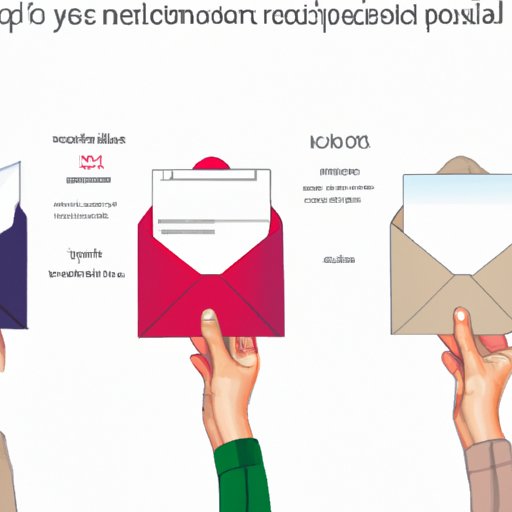Introduction
Have you ever found yourself staring at an envelope, wondering if you’re filling it out correctly? Whether you’re sending a letter to a friend down the street or a package to a relative abroad, it’s important to know the right way to fill out an envelope to ensure that your mail arrives at its destination. In this article, we’ll provide a comprehensive guide on how to fill out an envelope, covering different envelope types, international mail, personalization, common mistakes, and etiquette.
The Basics: How to Fill Out an Envelope
Before we dive into the specifics of different envelope types and international mail, let’s start with the basics of how to fill out an envelope.
Step 1: Write or type the recipient’s full name and address on the center of the envelope. Use the proper format: include their street address, city, state or province (if applicable), and ZIP or postal code. If you’re unsure of the proper format, you can use an online tool like the USPS ZIP code lookup.
Step 2: Write or type your own name and address on the top-left corner of the envelope. This is the return address. Make sure you include your full name, street address, city, state or province (if applicable), and ZIP or postal code.
Step 3: Place the proper amount of postage on the top-right corner of the envelope. If you’re unsure of how much postage you need, you can use an online tool like the USPS Postage Calculator.
Different Envelope Types
Envelopes come in different sizes and shapes, often with specific designs or features. Here are some common envelope types and how to fill them out:
Window envelopes: These envelopes have a see-through window on the front that displays the recipient’s address. To fill out a window envelope, make sure that the recipient’s address is positioned correctly so that it shows through the window. Follow the same format for your own return address and postage.
Self-addressed stamped envelopes: These envelopes are included with a letter or form and are pre-addressed and stamped for convenience. Simply fill out the form or letter as instructed, and then place it in the envelope, with your own return address in the proper position.
Padded envelopes: These envelopes have padding or cushioning to protect their contents, and are often used for shipping fragile items. To fill out a padded envelope, follow the same format for the recipient’s address, return address, and postage as you would for a standard envelope.
Adapting for International Mail
If you’re sending mail abroad, there are a few extra steps to consider.
Postage: Make sure that you have the proper amount of postage for international mail. You can use an online tool like the USPS International Rate Calculator to determine the cost of postage based on the destination country, size, and weight of your mail.
Forms: Some countries require additional forms for customs. Check with your local post office to determine if any forms are required for your destination country.
Address format: Different countries have different address formats, so it’s important to research the proper format for the country you’re sending mail to. Use an online tool like the Universal Postal Union Addressing Systems to find the correct format for your destination country.
Personalization
Why settle for a boring, plain envelope when you can add a personal touch? Here are some ideas for making your envelopes more creative:
Hand-drawn designs: Use your artistic skills to add a unique touch to your envelope. Draw a picture or design on the front, or add small doodles and details to the address area.
Colorful markers: Instead of using a plain black pen, try using colorful markers to fill out your envelope. Choose colors that coordinate with the occasion, or simply use your favorite hues.
Stickers and washi tape: Add some personality and flair with fun stickers or washi tape. These can be used to embellish the envelope edges or as part of the address area.
Common Mistakes
Here are some common mistakes people make when filling out envelopes:
Illegible handwriting: Make sure that the recipient’s address and your own return address are legible and easy to read. If the post office can’t read the addresses, your mail may not arrive at its intended destination.
Incorrect postage: Double-check the cost of postage and make sure that you’re using the proper amount for the type of mail you’re sending.
Missing information: Make sure that you include all necessary information, including the recipient’s full name, street address, city, state or province, and ZIP or postal code. For international mail, check for any additional forms or address formats required.
Etiquette
When it comes to envelope etiquette, there are a few rules to follow:
Titles and name formats: Use the proper titles and name formats for different recipients. For example, use “Mr.” or “Ms.” for business contacts, or “Dr.” for medical professionals.
Cultural considerations: For formal or international mail, research the proper cultural considerations for the recipient’s country or region. This may include using a more formal tone, or addressing the envelope in a specific way.
Conclusion
With this comprehensive guide on how to fill out an envelope, you’ll never have to second-guess yourself again. Whether you’re sending mail across the street or across the globe, knowing the proper way to fill out an envelope will ensure that your mail arrives at its intended destination.
